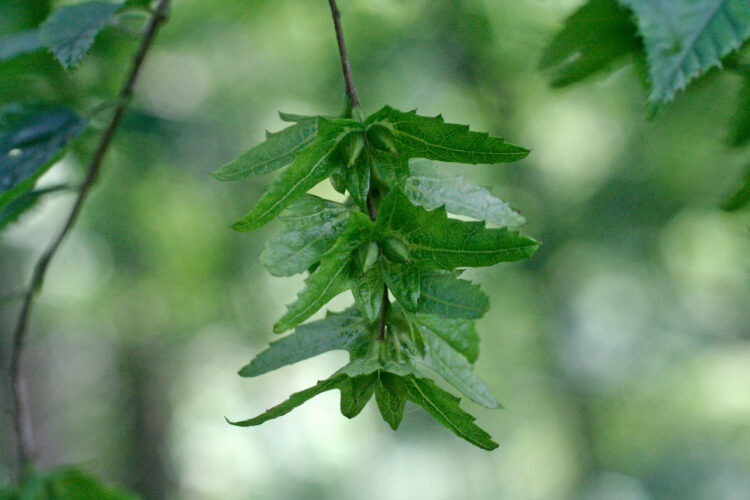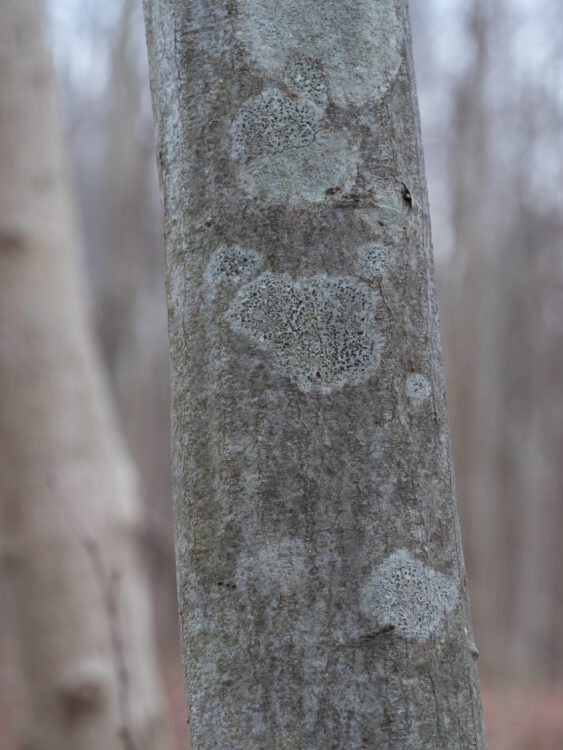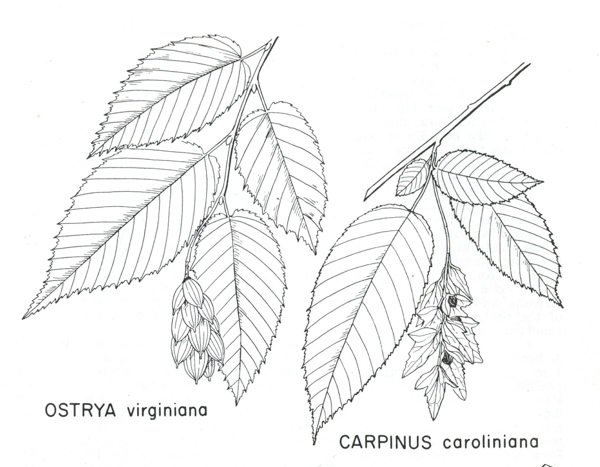American hornbeam (Carpinus caroliniana)
Betulaceae, the birch family
How to recognize American hornbeam. Sometimes called blue-beech (notice the hyphen before “beech”–because it’s in the birch family, not the beech family), this small tree also goes by the name musclewood, the latter being especially apt because of the irregular longitudinal ridges on the smooth blue-gray bark that indeed looks like a body-builder’s sinewy body. The leaves are alternate in arrangement, simple in complexity, with sharply serrate margins. The shape is ovate, and the veins are straight.

American hornbeam leaves and fruit
The leaves are annoying similar to some other members of the birch family, especially eastern hophornbeam (Ostrya virginiana). Fortunately, the fruits, when present, are an easy “tell,” as they are small nuts arranged in small downward-pointing spikes, each one subtended by a leafy toothed wing. In other words (no words actually; it’s a picture) they look like this:

American hornbeam fruits are winged affairs.
If there are no fruit, it’s still an easy ID, by the bark. It’s a small tree, often leaning, with bluish-gray bark furrowed longitudinally, looking very muscular.

Blue-beech bark with the lichen Arthronia radiata growing on it.
Where to find American hornbeam. E. Lucy Braun, in The Woody Plants of Ohio (1961, 1989; The Ohio State University Press) tells us that this species is “Common and widely distributed in Ohio, in moist and mesophytic woods.”
Scanned Image from an Old Book
(Flora of West Virginia, by P.D. Strausbaugh and Earl L. Core)

American hornbeam is on the right.
Ooh ooh. I have a question!
American hornbeam is a nice name; are there any others in common usage?
Yes! It’s often called ironwood (terrible!), blue-beech and musclewood as well.
